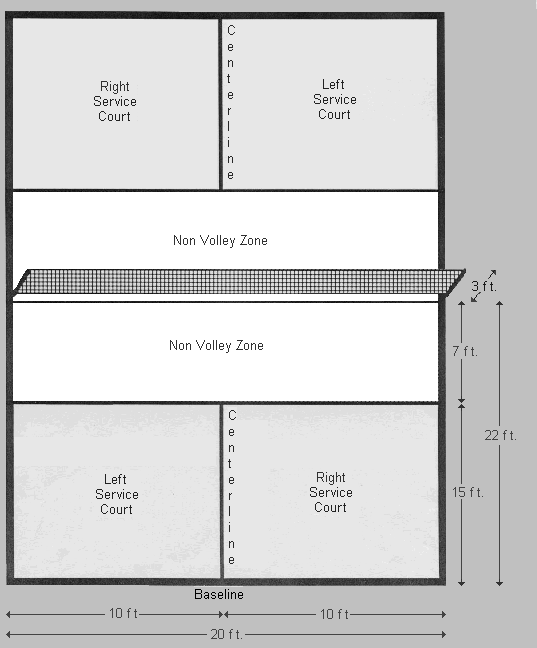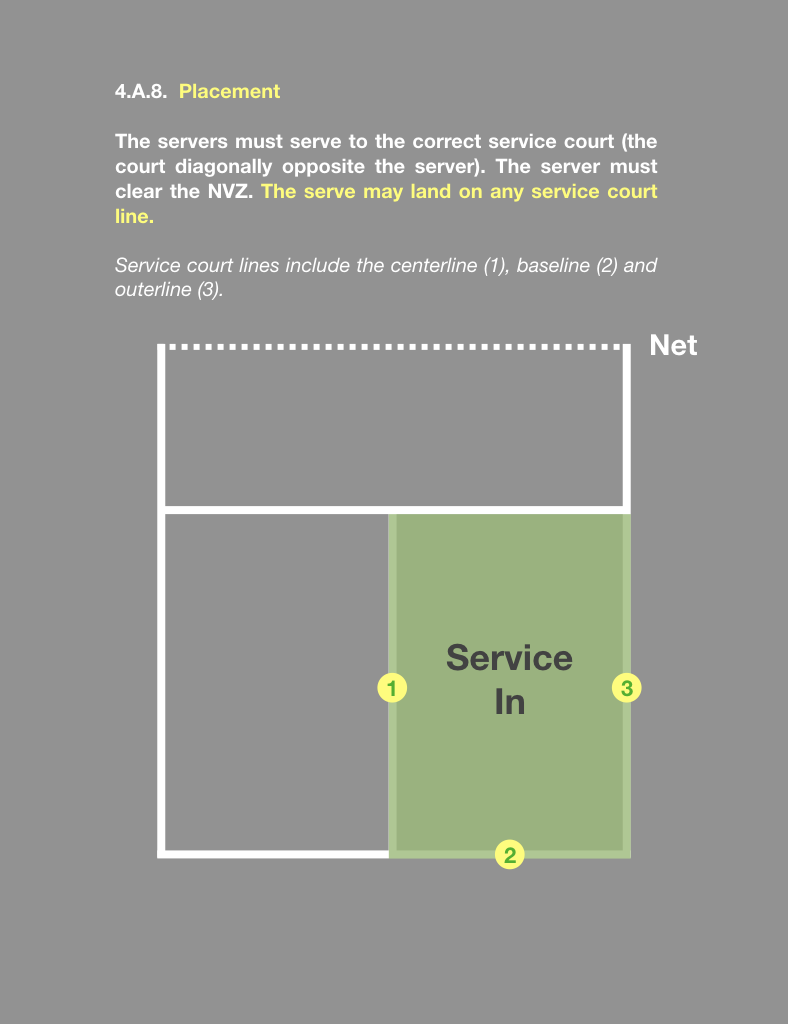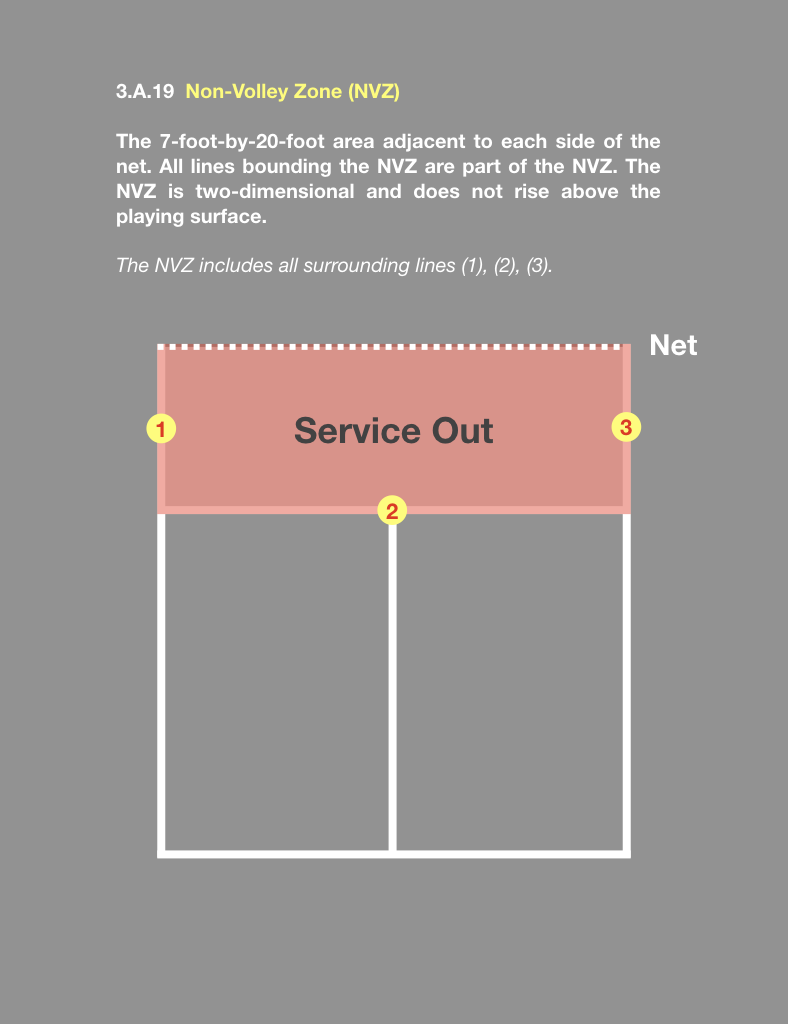Rules and Gameplay
Scoring
Points can only be scored by the team that serves
Games will be played to 11 points and you must win by 2 points.
Court and Dimensions
Non-Volley Zone (“the kitchen”)
There’s a zone called “the kitchen” within 7 feet on both sides of the net. This is the “non-volley” zone — meaning you can only hit a ball from this zone on a bounce. If you hit a volley (in the air, no bounce) when standing in the kitchen, it’s considered a fault. It’s also a fault if you accidentally step into the kitchen after hitting a volley, even if it’s just momentum that sends you there. Standing on the kitchen line counts as being in the kitchen.
Serving
Valid Serve in Green Box
Invalid Serve in Non-Volley Zone
When you serve the ball, you must hold the paddle and the ball below your waist and serve underhand.
Serves must land in the back box diagonal to the server. While serving, you must stand behind the baseline and within the sidelines.
The server continues to serve, alternating sides each point until their team loses a point. At that time, their partner begins serving, switching sides each point until they lose a point. When the serve switches sides, the player on the right side of the court is the first to serve.
With the first serve of the game, that team gets only one chance to serve (until they lose a point). It is as if they are the second server on their team. The opposing team then gets a chance for both players to serve (meaning until their team loses two points). The serving pattern continues in this manner for the rest of the game.
The score must be called out by the server before each point. Three numbers are called out: Your score, your opponent’s score, and whether you are the first or second server for your team. This allows everyone to keep track of both the score and who’s turn it is to serve.
Two-Bounce Rule
Pickleball uses a two-bounce rule. This means that when a ball is served, each side has to let the ball bounce once before hitting it. After those two bounces, you can then either hit the ball before it bounces (a volley), or off a bounce. If a team does not allow the ball to bounce on the serve or return, that team loses the point.
Faults
If a ball touches any part of a line, the ball is in, EXCEPT for a ball that hits the kitchen line on a serve. In that case, the ball is out.
If a player touches the net with their paddle or any part of their body, that is considered a fault and that team loses the point.
If the ball touches your hand below the wrist, the ball remains in play and the point continues.
Double hits (the ball hitting your paddle twice) are legal but only under certain circumstances. To be a legal double hit, the hit must be (1) unintentional, (2) continuous, (3) a single-direction stroke, and (4) by just one player.
Interference
If a ball rolls onto your court from another court during a point, any player may yell “Ball” to stop the point at that moment and the point will be replayed.



